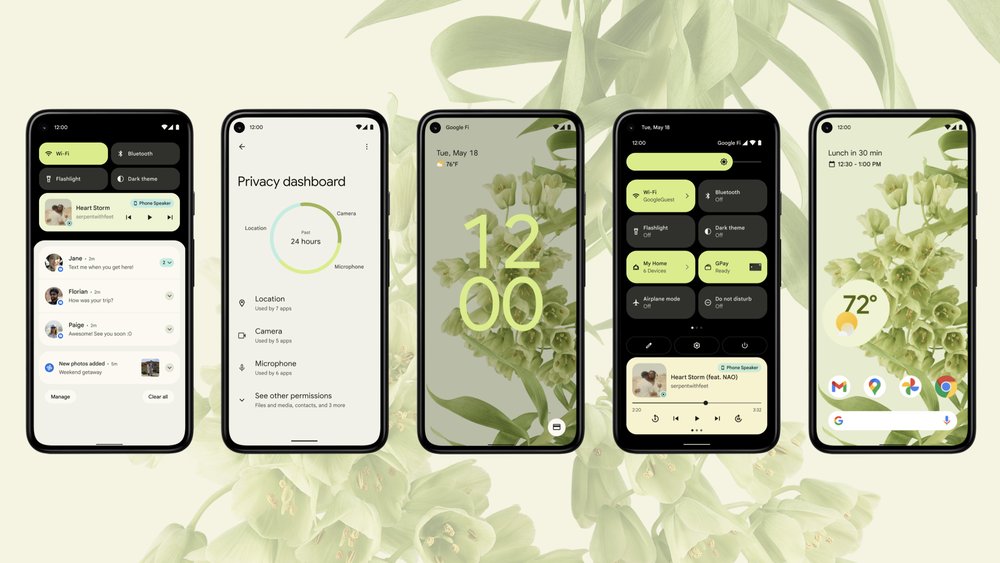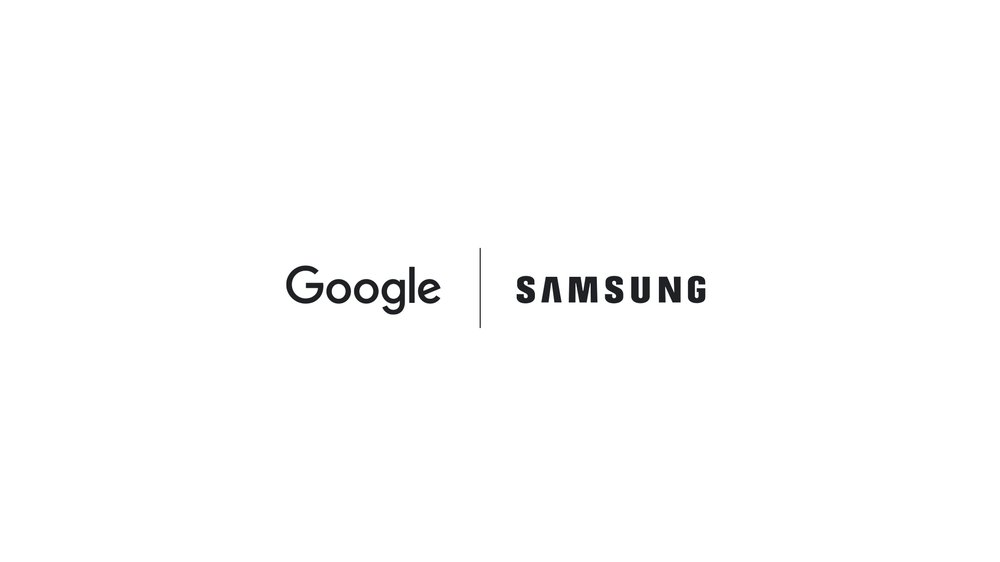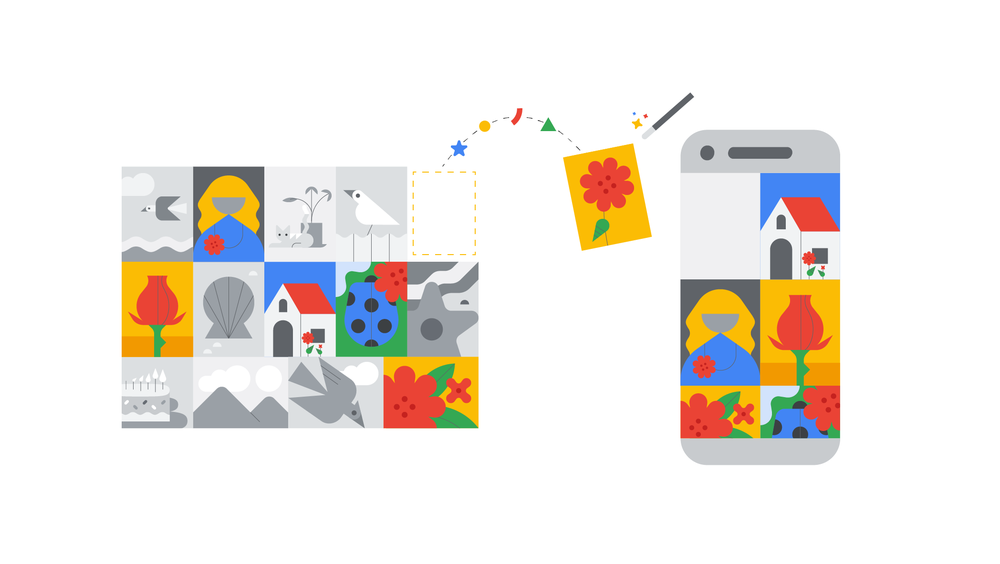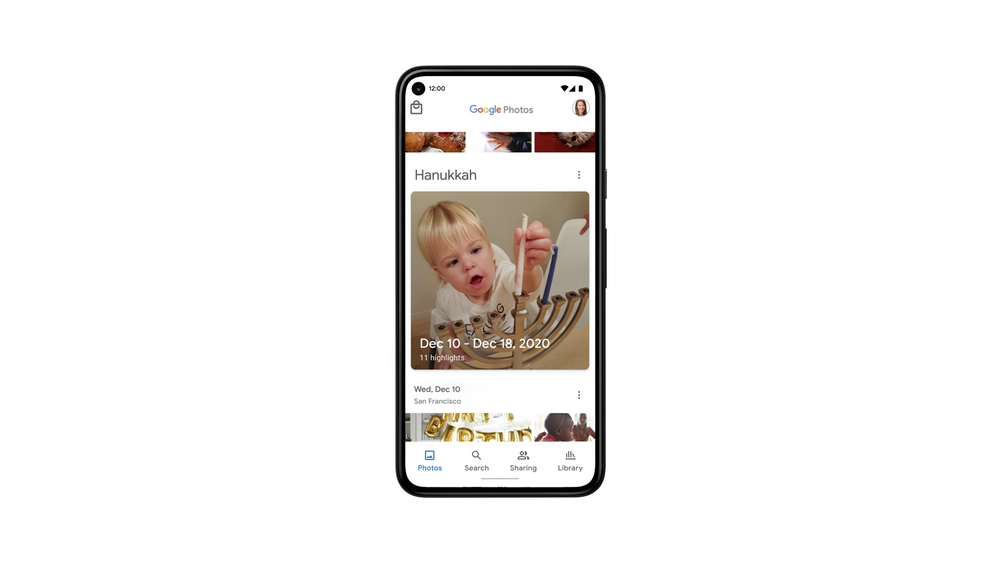Google’s annual conference is back, with an all-digital event that took place earlier today. As expected, the company offered a look at what’s coming next, including the next major update to Android.
The event was not quick, with the company taking its time going over the next big things coming down the pipe. That included a look at Android 12, the next version of the operating system heading to devices later this year. And, of course, the company detailed quite a few new features coming to the platform.
So let’s dig in.

Android 12
Google detailed the next big version update for its mega-popular Android operating system. The company says this is one of the biggest changes for the platform since its debut all those years ago, with the primary focus being the design language “Material You.” Google says this is all about customization and bringing a more personal feel to your devices.
Redesigned widgets will help with that, along with the ability for the user to choose their color palette. Or you can let the system automatically choose one for you based on the wallpaper you put on your device’s background.
Starting with Android 12 on Pixel devices, you’ll be able to completely personalize your phone with a custom color palette and redesigned widgets. Using what we call color extraction, you choose your wallpaper, and the system automatically determines which colors are dominant, which ones are complementary and which ones just look great. It then applies those colors across the entire OS: the notification shade, the lock screen, the volume controls, new widgets and much more.
There is a more fluid motion to the overall system, with a lot more animation presets in place as well. The whole user interface feels more reactive now, with lights, animation, and subtle tweaks to make it feel like the UI is actually reacting to the user’s input.
Google’s not afraid to take up space with the new interface, either. The notification shade features much bigger buttons and sliders, making it all easier to interact with, but also much easier on the eyes, too:
The notification shade is more intuitive and playful, with a crisp, at-a-glance view of your app notifications, whatever you’re currently listening to or watching, and Quick Settings that let you control practically the entire operating system with a swipe and a tap. The Quick Settings space doesn’t just look and feel different. It’s been rebuilt to include Google Pay and Home Controls, while still allowing for customization so you can have everything you need most in one easy-to-access place.
Privacy is a big part of Android 12, according to Google. There is a new Privacy Dashboard baked into the software that will allow users to quickly see all of their permission settings. This area will also show the user what data is being accessed on their devices. Users will be able to quickly and easily revoke access as well.
And Android 12 picks up a similar feature to iOS as well:
We’ve added a new indicator to the top right of your status bar so you know when your apps are accessing your microphone or camera. And if you want to remove app access to these sensors for the entire system, we’ve added two new toggles in Quick Settings.
And Google goes on:
We’re also giving you more control over how much information you share with apps. With new approximate location permissions, apps can be limited to seeing just your approximate location instead of a precise one. For example, weather apps don’t need your precise location to offer an accurate forecast.
Beyond these new privacy features in Android 12, we’re also building privacy protections directly into the OS. There are more opportunities than ever to use AI to create helpful new features, but these features need to be paired with powerful privacy. That’s why in this release we’re introducing Android Private Compute Core. It allows us to introduce new technologies that are private by design, allowing us to keep your personal information safe, private and local to your phone.
A digital car key feature is present in Android 12, too. This is similar to Apple’s own Car Key feature in iOS. It will support Ultra Wideband (UWB) and NFC right out of the gate, but only the auto manufacturer BMW was announced as a partner. As long as future car manufacturers support the feature, this will allow Android 12 users to use their supported device as their car key, rather than rely on their dedicated FOB.
The company also confirmed that its Fast Pair feature is expanding in a big way. It will support the digital car key feature in the future, but it will also work with other devices, including Beats headphones. This will let pairing to these devices, and automobiles, much easier — just with a single tap.
Google released the first official Android 12 beta today, so folks who are interested in trying out the pre-release software can do just that.
Wear OS
Google still has a smartwatch platform out there, one that it hasn’t completely given up on quite yet. And it appears the company’s ready to start actually trying make it worthwhile again. During this year’s I/O conference, the company announced a new partnership with Samsung to help boost Wear OS in new and exciting ways.

The new partnership between the two companies will see some immediate changes moving forward. First and foremost, this means that Samsung has decided it will not continue to develop its own custom user experience for smartwatches. So, say goodbye to Tizen OS. Tizen’s “best features” will now be baked into Wear OS moving forward, and Wear OS will be the operating system of choice for Samsung’s future smart wearables.
Samsung and Google have a long history of collaboration. Now, we’re bringing the best of Wear and Tizen into a single, unified platform. By working together we have been able to take strengths of each and combine them into an experience that has faster performance, longer battery life and more of the apps you love available for the watch.
Google says the new Wear OS experience will lead to a new consumer experience, too. Google has improved the way users will manage and interact with apps on their smartwatch running the latest version of Wear OS. Switching to the previous app is simple, just by swiping from one to the other. The are more distinct, fluid animations, and Google is making sure to reinvigorate its own first-party apps for a better watch experience.
Google Maps and Google Assistant are being redesigned and improved. Google Pay will also be redesigned and add support for 26 new countries, beyond the 11 countries currently available. YouTube Music will also arrive on Wear later this year, equipped with features like smart downloads for subscribers to enjoy music while on the go.
Health and fitness tracking is essential for wearables. With the latest Wear update, we welcome Fitbit’s many years of health expertise to the experience. The best of Fitbit, including features like tracking your health progress throughout your day and on-wrist goal celebrations, will motivate you on your journey to better health.
Google is also developing better tools for developers so they can bring their apps to the Wear OS platform:
We are also making it easier for our developer community to build great apps (including new Tiles!) for the platform, and reach millions of consumers all over the world through the Google Play Store.
New tools, like a Tiles API and a watch face design editor built by Samsung, make it a breeze to develop new experiences on wearables. New and rebuilt apps from developers like Strava, adidas Running, Bitmoji and many more are coming to the platform.
The changes to Wear OS are coming later this year, but developers will be able to start developing for the revitalized platform soon.
Photos

Google is making tweaks to the Memories feature in its Photos app, getting even more granular in what it surfaces for you to remember:
With Memories, you can already look back on important photos from years past, recent highlights, moments with your loved ones, your favorite activities and more. Using machine learning, we can now go beyond resurfacing photos based on themes to doing so based on not-so-obvious visual patterns in your photos. Starting later this summer, when we find a set of three or more photos that share things like shape or color, we’ll highlight these little patterns for you in your Memories. For example, one of our engineers received this collection featuring photos he snapped of his favorite orange backpack.
There are new highlights coming, too, including more events, like the Lunar New Year, as well as Trip highlights and Best of Month memories.

Cinematic moments will build upon the 3D photos Google launched in late 2020. Using artificial intelligence and neural networks, Photos will essentially create a moving photo based on two “nearly identical” photos. It will manifest new frames between those two bookend photos, then create “vivid, moving images” that are truly something to behold. It’s not a Live Photo by any means, but it’s certainly interesting.
Best of all, Cinematic moments can be created with any pair of nearly identical images — whether they were captured on the latest smartphone or scanned from an old photo album. Creating this effect from scratch would take professional animators hours, but with machine learning we can automatically create these moments and bring them to your Recent Highlights.
Google is also making it easier to stop some memories from surfacing in the app at all:
Not all memories are worth revisiting. Whether it’s a breakup, a loss or some other tough time, we don’t want to relive everything. We specifically heard from the transgender community that resurfacing certain photos is painful, so we’ve been working with our partners at GLAAD and listening to feedback to make reminiscing more inclusive. Google Photos already includes controls to hide photos of certain people or time periods, and we’re continuing to add new ones to improve the experience as a result of this continued partnership. Later this summer we’re making these controls easier to find, so you can choose what you look back on in just a few taps.
Google is also adding a Locked folder that will let users easily hide photos that they don’t want easily visible in their library.